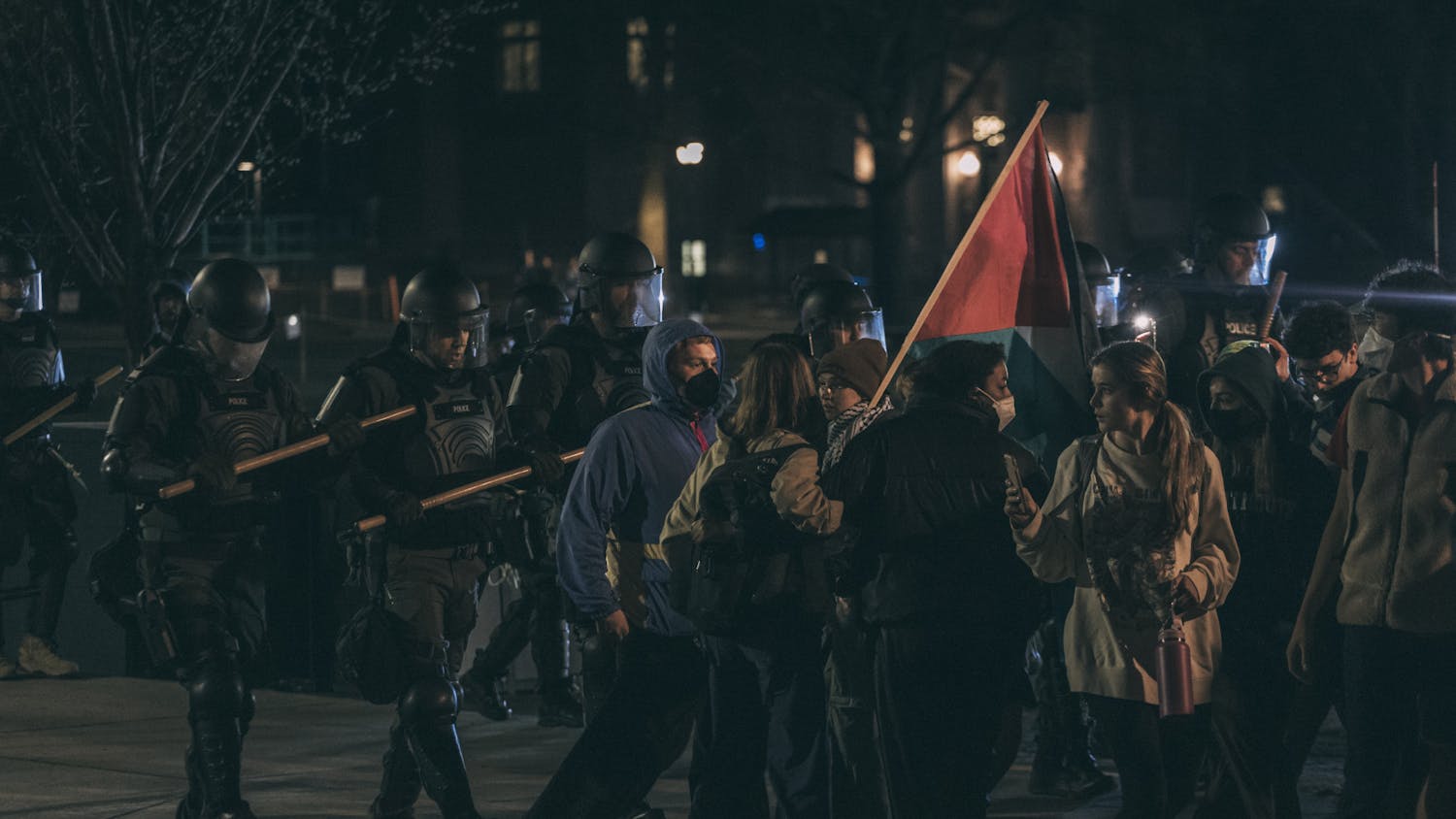This article is featured in the 2024 Homecoming Special Issue.
As the Hanover trees change to vibrant autumn colors and leaves start to fall, there is one question on everyone’s mind: When is it time to pull the winter jacket out of retirement?
Deciding when to make the wardrobe switch between seasons is always a tricky process, especially when transitioning from autumn to winter. Intense rays of sunlight one day can be followed by biting cold the next, forcing students and faculty into a sartorial limbo.
Furthermore, Dartmouth is a melting pot of students from a wide variety of locations, with a whole range of climates and fashion trends. Privat Bizabishaka ’26, who hails from Burundi, said he had “never experienced such cold weather like [Hanover winter] before” and therefore “never had a big jacket in [his] life.” He acquired his first large jacket when he came to Dartmouth and typically begins to wear a coat in October.
In contrast, Kyriakos Papasavas ’28, who comes from Connecticut, said he was more tolerant of the cold. Rather than putting on a large jacket early into the fall term, he prefers “lightweight Pajar jackets,” favoring the “aluminum foil of the interlining” over something “bulkier.”
For some students, the early signs of winter — such as the shorter days and harsh, cool breezes — prompt the layering of scarves, sweaters or coats.
According to Bizabishaka, students tend to mirror the clothing choices of those around them. If a contingent of students decides to delay their transition to heavier layers, students around them may do the same.
Bizabishaka, for example, noted that his decision to wear a coat can stem from what he observes around him. Before even checking the weather, he will look out the window to assess his peers’ choices, he explained. If he sees that “everybody is wearing jackets,” he will “know that the weather has changed,” and it’s time to put on a heavier jacket.
While the decision to don winter clothing is largely out of necessity, the pieces students choose to wear to stay warm are largely determined by personal preference and stylistic choice, Azaire Andre ’27 said.
Even as the temperature begins to drop, self-expression is sometimes prioritized over physical comfort. The aesthetic of winter wear has evolved over the years, from practical coats to more sleek and stylish jackets. Students may choose — or choose not to — wear certain winter clothing not out of necessity, but self-presentation.
Andre, for example, said she wouldn’t wear a jacket she disliked, even if the weather merited it.
“Sometimes I won’t wear layers, even though I feel like I should, because I don’t want to look bulky,” Andre said.
Although aesthetics are certainly an important part of the decision-making process, some students choose jackets that are both attractive and functional. Amol Bhingharde ’28 said his favorite brands are L.L. Bean and Patagonia “because of their good quality.” He highlighted that the L.L. Bean fleece he was wearing at the time has lasted him “two years and it hasn’t ripped or anything.”
Students may also decide on the practicality of their clothing depending on what event or situation they are in. Despite Bizabishaka’s inclination to dress warmly for colder weather, he also emphasized that his clothing choice depends on where he’s going.
“If I’m going to a party, sometimes I don’t wear a jacket, even if it’s cold,” Bizabishaka said. “At a party, we need to wear some [form] of fashion.”
While Andre shared this sentiment, she also opts to wear a “fracket” — an old jacket usually worn to fraternities or parties — which allows her to be warm without damaging her “nice coats.”
Regardless of external influence, though, we still communicate elements of our individuality in our responses to the incoming cold. Bhingharde shared his favorite winter item: the gloves in his bag.
“I keep them just in case because I like riding my bike out, and then when the wind comes on you, your hands get really cold,” Bhingharde said.
Andre also said she has a winter piece she often carries with her — though it isn’t a clothing item.
“I don’t ever carry Vaseline or lip balm in the summer, but in the winter I do,” Andre said.
The decision of when to wear winter clothes, though seemingly simple, is influenced by a wide variety of factors — regional differences, personal style, fashion trends and, of course, the weather. Our responses to the environment are ever-changing, and while a Dartmouth student might be seen pulling out their North Face Parka in early October one year, it might not make an appearance until late November the next.




